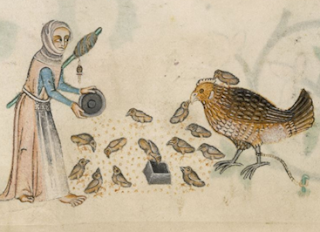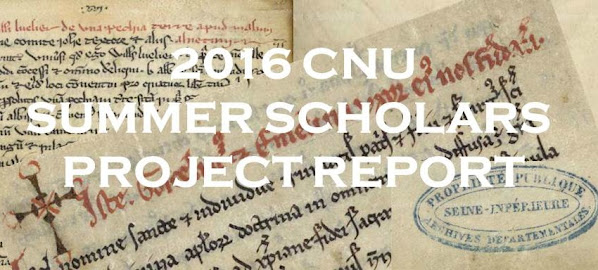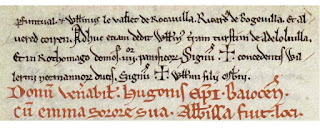Hello to the CNU Medievalists and Early Modernists from Dr Cartwright! This is the first of what will be several updates on the status of a medieval research project taking place at CNU as part of the Summer Scholars Program.
For those who don’t know, this is the second year of the CNU Summer Scholars Program, where a faculty mentor and student fellow apply to work together on a research project for eight weeks over the summer. This year I applied with Dyllan Cecil (rising senior, History and Classics) and we won one of the thirty five grants to work on a project to translate the cartulary of the nunnery of Saint Amand.
Saint Amand was a house of nuns founded in Rouen, Normandy c. 1048 by Joscelin vicomte of Arques and his wife Emmeline. The first abbess was Emma, a cousin of Duke William the Conqueror (of 1066 fame). With such illustrious patrons, the house attracted many donations of land and money to help support the nuns. In the mid thirteenth century the nuns compiled a cartulary – a book that had copies of the records of donation which the house had amassed over the years.
Our project began on June 6 and will run until the end of July. We began with the earliest document in the cartulary, which is a copy of the foundation charter of Joscelin and Emmeline. The cartulary is hand-written, and the early script looks like this:
What you see here is the end of one document, with the crosses indicating a signature by those who witnessed the donation when it was made, and then the red text which is the heading for the next document. In this case the red text reads “Donum venerabilis hugonis episcopi Baiocensi cum emma sorore sua Abbatissa fuit loci”; the next document records a donation made by Bishop Hugh of Bayeux with his sister Emma, the first abbess.
Most of the donations are in land, but some have peculiar details. In 1220, in return for a donation of fields, John of Saint Amand required that he be given four capons each year at Christmas. We had to look this up: a capon is a rooster that has been castrated to improve the quality of its meat for eating.
 |
| Future capons? |
Sometimes it is hard to tell what exactly the wording means. In one donation, William gave “domos IIII panificorum”. Classical dictionaries suggested that this must have been four houses made of fig bread or made of cake. We had to search a specialized medieval lexicon to find that panificorum was used for a bakery or baker’s house.
 |
| And a house of cake? |
We will keep posting as we learn more about this nunnery and its holdings.

